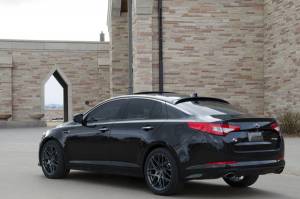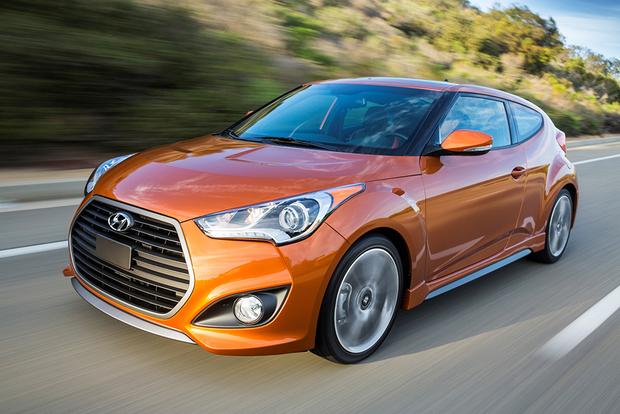According to the Ministry of Land, Infrastructure and Transport, there are now more than 20 million cars or trucks in Korea. That’s one four-wheeled, motorized vehicle for every 2.56 people. Quite a jump from the 7,000 cars in the country at the end of World War II. All came from elsewhere, primarily Japan and the USA.
Locally made automobiles
By contrast, more than 93% of today’s passenger vehicles were made locally—which means Hyundai, Kia and to a much lesser extent, SsangYong. The first Korean car was a rudimentary contraption built on a Jeep chassis with a weak 4-cylinder engine. The Sibal (meaning “start”) was made from 1955 through 1963, shortly after the government, by which I mean Park Chung-Hee, instituted tax and tariff policies that excluded most foreign cars. Korea is now the fifth-largest producer in the global automotive market, which is quite a stunning development.
 I want to make a few comments about the cars—and the men and women who drive them—in Korea. For reasons both cultural and practical, most of the cars here are either white, black or silver. This monochrome tendency is boring. I have been told that Koreans value conformity over showiness, and that reselling any car outside the white-black-silver triad is difficult. My observation is not absolute, however. A few individualistic people buck the trend and go with bright yellow, candy-apple red or metallic blue. I admire their spirit. Another matter is the prevalence of heavily tinted windows. Sure, from the owner/driver’s perspective, it looks cool and sexy, and it allows them to maintain privacy. Tinted windows are very effective, but they are illegal for good reason. Other drivers (and more important, pedestrians) need to be able to see those darkness-shrouded drivers to ascertain whether they are paying attention. Does he/she see me? Is he/she planning to turn left, go straight or slow down for me to pass? His/her intentions are not clear because the windows are not clear. Enforcement of laws against tinted car windows seems to be a low priority. I did a cursory check of the cars on Teheran Street the other day, and at least two-thirds had tinted windows.
I want to make a few comments about the cars—and the men and women who drive them—in Korea. For reasons both cultural and practical, most of the cars here are either white, black or silver. This monochrome tendency is boring. I have been told that Koreans value conformity over showiness, and that reselling any car outside the white-black-silver triad is difficult. My observation is not absolute, however. A few individualistic people buck the trend and go with bright yellow, candy-apple red or metallic blue. I admire their spirit. Another matter is the prevalence of heavily tinted windows. Sure, from the owner/driver’s perspective, it looks cool and sexy, and it allows them to maintain privacy. Tinted windows are very effective, but they are illegal for good reason. Other drivers (and more important, pedestrians) need to be able to see those darkness-shrouded drivers to ascertain whether they are paying attention. Does he/she see me? Is he/she planning to turn left, go straight or slow down for me to pass? His/her intentions are not clear because the windows are not clear. Enforcement of laws against tinted car windows seems to be a low priority. I did a cursory check of the cars on Teheran Street the other day, and at least two-thirds had tinted windows.
These drivers…
 Now, as to the performance of the drivers. Korea ranks third among OECD countries in terms of frequency of car accidents: 120 accidents per 1 million people. As for fatalities among pedestrians, no OECD country is worse. Senior citizens seem to be most vulnerable. A common theory for this awful situation is the palli-palli (“hurry-hurry”) trait among modern Koreans. They are so hell-bent to reach their destinations as soon as possible, they can’t slow down for other drivers—and certainly not for those on foot. I am not at all sure about this, if only because it’s a broad-brush characterization. A stereotype, in other words. Some Korean drivers are courteous and patient. I’ve seen it with my own eyes and can tell you it’s true. Another theory I’ve heard is based on the fact that Korea is a small and yet highly populated country and there’s not a lot of free space. A driver who makes a mistake is likely to be in a collision, be it a fender-bender or a fiery crash that results in multiple deaths. A further possibility is that driving culture—if there is such a thing—has not had time to take root, and thus you have a bunch of people operating their Sonatas, Elantras, Optimas and Chairmans in a helter-skelter fashion.
Now, as to the performance of the drivers. Korea ranks third among OECD countries in terms of frequency of car accidents: 120 accidents per 1 million people. As for fatalities among pedestrians, no OECD country is worse. Senior citizens seem to be most vulnerable. A common theory for this awful situation is the palli-palli (“hurry-hurry”) trait among modern Koreans. They are so hell-bent to reach their destinations as soon as possible, they can’t slow down for other drivers—and certainly not for those on foot. I am not at all sure about this, if only because it’s a broad-brush characterization. A stereotype, in other words. Some Korean drivers are courteous and patient. I’ve seen it with my own eyes and can tell you it’s true. Another theory I’ve heard is based on the fact that Korea is a small and yet highly populated country and there’s not a lot of free space. A driver who makes a mistake is likely to be in a collision, be it a fender-bender or a fiery crash that results in multiple deaths. A further possibility is that driving culture—if there is such a thing—has not had time to take root, and thus you have a bunch of people operating their Sonatas, Elantras, Optimas and Chairmans in a helter-skelter fashion.
I live in Gangnam, and is it ever congested. Narrow streets, few sidewalks, too many cars and people with frazzled nerves behind the wheel make for an unhealthy combination. Mention was made earlier that pedestrians are at risk on Korean streets, and I don’t need fancy government statistics to support such an assertion. I sometimes ask myself, “Was it like this when I lived in the USA? Were drivers so  callous toward those of us on foot?” I honestly think there is a difference. In the USA, drivers are more apt to watch out for pedestrians. Here, I regret to say, the attitude is not so kind. Drivers’ attitudes toward pedestrians are as follows: “You need to move out of the way. Otherwise, you will get hurt.”
callous toward those of us on foot?” I honestly think there is a difference. In the USA, drivers are more apt to watch out for pedestrians. Here, I regret to say, the attitude is not so kind. Drivers’ attitudes toward pedestrians are as follows: “You need to move out of the way. Otherwise, you will get hurt.”
Pedestrians beware
Best to be extra-careful at intersections. You stand and wait for the light to turn. When it does, there is about a two-second pause before you see the green sign indicating it’s OK to cross. I have learned not to trust that; I still look both ways. Too often, drivers simply do not want to wait. They egregiously breeze through red lights, sometimes tooting their horns as if to say, “Red light or not, I’m coming through.” Maybe two years ago, I was at a busy intersection close to home. Among those waiting to cross were two lively young boys. The light changed and they started to run forward. A cab driver in the closest lane was determined to get through the intersection. I would have witnessed a horrible scene if an adult had not reached out his arm and grabbed them both at the last second.


Add Comment